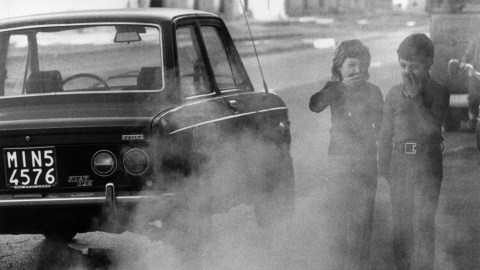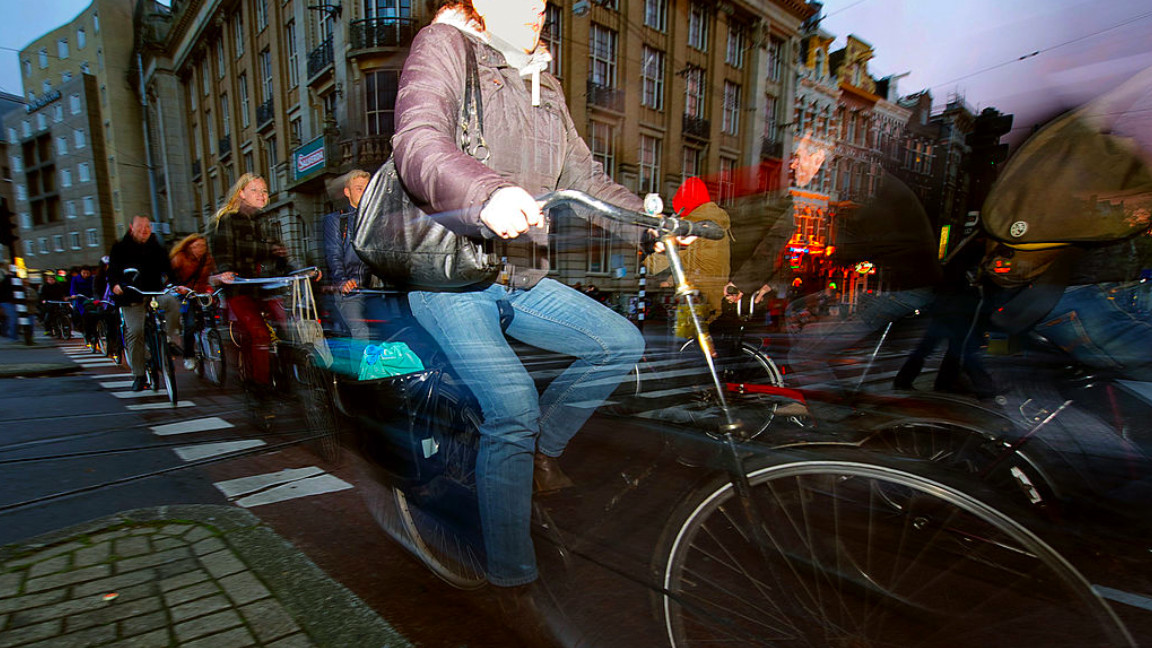Get Paid to Bike to Work? In Milan, You Can.

Some cities are giving their streets back to pedestrians and cyclists. But rather than ban cars outright, like Oslo, the Italian city of Milan is giving commuters a cash incentive for cycling to work.
Air pollution was responsible for 5.5 million premature deaths around the world in 2013. It’s one of the leading environmental risk factors for disease. In Milan and Rome, vehicles had to be banned from the streets in order to avoid harmful smog buildup. Major roadways, like the one below, saw no traffic for six hours of the day when cars were banned.

Milan is trying to come back from its name as Europe’s most polluted city. However, its new sustainability incentive program may be going about it the wrong way.
Reimbursement programs may have a few people choosing to leave their Fiat in the garage, but in order for these incentive programs to work, the infrastructure needs to be there to support it, says Ralph Buehler, an associate professor in urban affairs and planning at Virginia Tech in the United States.
“If you don’t provide a safe cycling environment, you will only get a very small group of people,” Buehler told The Guardian. “Just paying people alone will not have that much of an effect, because you don’t get to that part of the population which are ‘enthusiastic but concerned’.”
Copenhagen boasts some of the best bicycle infrastructure, but many of its citizens don’t do it for the environment or to better their health. Researchers found 56 percent of people surveyed did it because it’s quicker and easier to get around town.
While cash to cycle may get more people to bike, Milan may not see the numbers necessary to curb pollution. The city needs to make cycling the easier choice over driving to work.
“The city of the future — the city of the future will have bicycle-accessible places,” says Bill Nye. “You could, for much less money, make a secure bike way that would last much longer than a roadway, be a much thinner bridge, but it would be dedicated to bicycles.”
***
Photo Credit: Keystone/Hulton Archive/Getty Images
In article: MARCO BERTORELLO/AFP/Getty Images
Natalie has been writing professionally for about 6 years. After graduating from Ithaca College with a degree in Feature Writing, she snagged a job at PCMag.com where she had the opportunity to review all the latest consumer gadgets. Since then she has become a writer for hire, freelancing for various websites. In her spare time, you may find her riding her motorcycle, reading YA novels, hiking, or playing video games. Follow her on Twitter: @nat_schumaker



